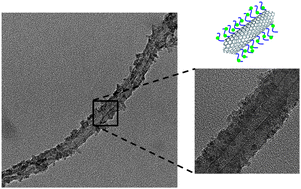Soft matter engineering of carbon nanotubes: polyelectrolytes as tools for surface tailoring, self-organization and templation of hybrid nanostructures
Abstract
Polyelectrolytes have been extensively used for the surface engineering of

* Corresponding authors
a
CIC biomaGUNE, Paseo Miramón 182 C, 20009 San Sebastian, Gipuzkoa, Spain
E-mail:
smoya@cicbiomagune.es
Fax: +34 943005311
b MOE Key Laboratory of Macromolecular Synthesis and Functionalization, Department of Polymer Science and Engineering, Zhejiang University, Hangzhou 310027, China
Polyelectrolytes have been extensively used for the surface engineering of

 Please wait while we load your content...
Something went wrong. Try again?
Please wait while we load your content...
Something went wrong. Try again?
G. Romero and S. E. Moya, Soft Matter, 2012, 8, 9727 DOI: 10.1039/C2SM25425E
To request permission to reproduce material from this article, please go to the Copyright Clearance Center request page.
If you are an author contributing to an RSC publication, you do not need to request permission provided correct acknowledgement is given.
If you are the author of this article, you do not need to request permission to reproduce figures and diagrams provided correct acknowledgement is given. If you want to reproduce the whole article in a third-party publication (excluding your thesis/dissertation for which permission is not required) please go to the Copyright Clearance Center request page.
Read more about how to correctly acknowledge RSC content.
 Fetching data from CrossRef.
Fetching data from CrossRef.
This may take some time to load.
Loading related content
